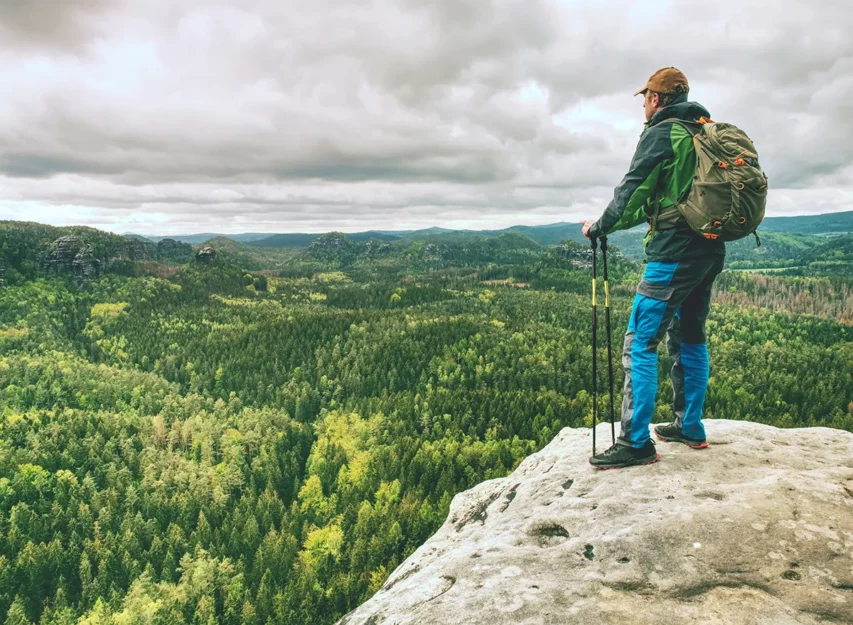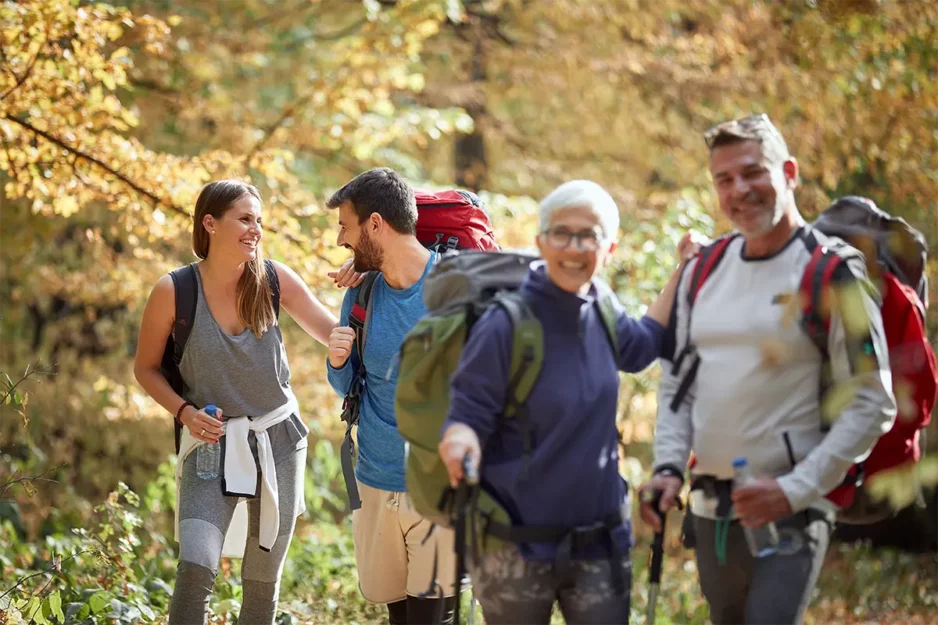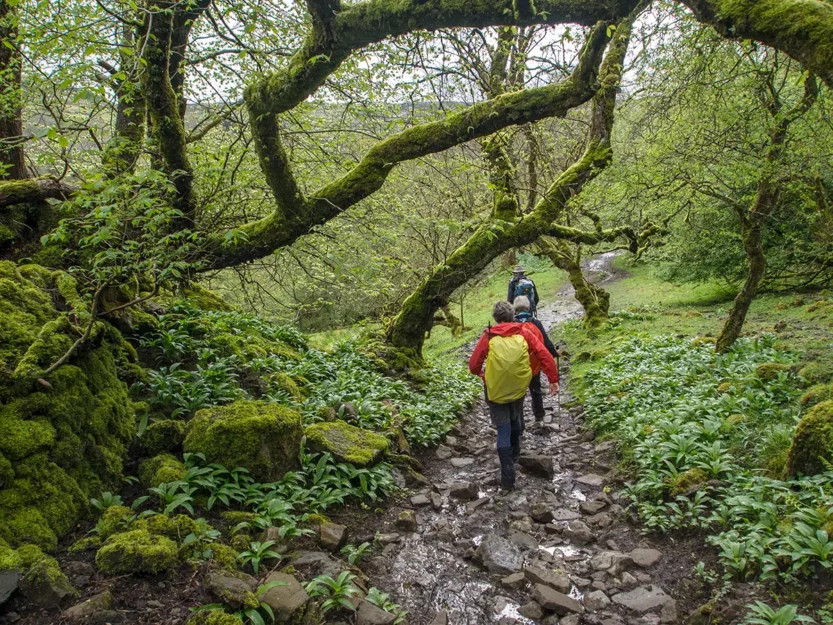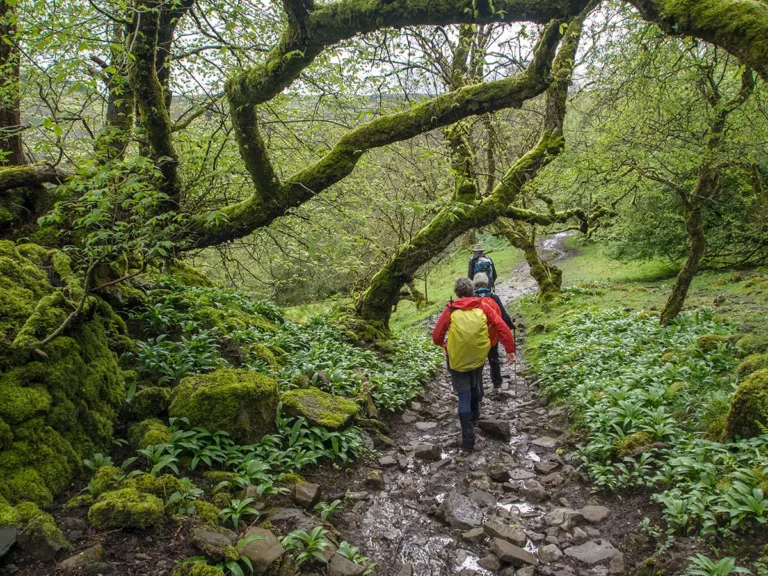One of the first things someone new to hiking should do is to get in shape. So, what are the best exercises for hiking?
Hiking most obviously uses the leg muscles, but virtually every muscle group is involved. Also, it requires very good cardiovascular and lung capacity to complement your muscular stamina.
Unless you’re naturally fit, which few of us are blessed with, exercise and training will be crucial for every hiking beginner.
What simple exercises prepare you for tackling those hills and streams?
- Long walks
- Jogging
- Squats
- Lunges
- Rowing

Best exercises for hiking beginners
Fitness is essential to enjoy long hikes. Many hiking beginners struggle with their first hikes, often deciding they dislike hiking because of the difficulty.
With training and exercise hiking becomes easier, and more enjoyable.
As with any exercise routine, it’s essential to warm up for a few minutes and do some gentle stretching before starting a workout.
Jogging in place, easy stretches of the torso left and right, moderate pulling on the hamstrings, calves and so forth are great.
Ease into it.
Leg workouts
First, the legs. The ability to walk long distances over extended periods of time will require that all of the joints and major muscle groups in your lower body will need to be in top working condition.
Simple air squats are a good start. Begin slowly by simply extending your arms out to the sides, heels almost together, and your weight balanced.
Squat down a comfortable amount, then push yourself back up again. Repeat at least 10 times per day, working up to 20, then 50 as you gain strength over time.
Squats are one of the best exercises for hiking, or for anyone trying to raise their fitness levels.
Lunges are also good. Put one foot forward about 18 inches, then kneel down slightly. Hold a few seconds, then raise back up. Switch legs and repeat 10 times.
As with squats, you’ll want to build up to higher repetitions and deeper lunges over time. How far to extend the foot and how deep to kneel depend on your height and general condition.
Don’t overdo it or you’ll injure yourself.
Cardiovascular training
When considering the best exercises for hiking walking, running and jogging can not be ignored.
A good 10-minute jog is next in line. No more than a mile to start with, shorter if you are badly out of shape. Work up to 20 minutes, 30 minutes, then an hour at most.
Anything longer than an hour isn’t jogging, it’s practice for marathon running. The idea is simply to get the cardiovascular and lung systems working well, and build up some more leg strength.
You should jog at least two or three times per week if you want to be well prepared.
Keep in mind, that if you want to be in better shape for more serious hikes than a stroll over the hills, you’ll want to add other exercises. Training on a weight machine is useful for that.
Supportive muscle groups
The back muscles are also essential to walking. The torso provides the central pillar against which the limbs move.
Strong back muscles help maintain a good posture — essential for fighting against fatigue, especially if you carry a hiking backpack.
You’ll also need to scramble over small boulders, down hills, and rough terrain. The back muscles are vital for that and much more.
Sit ups are helpful, as are ‘lat’ exercises. The latissimus dorsi are the large muscles on your side that make fit men look like a ‘triangle’. Those, and the back muscles nearby, are the ones you want to build up, in order to keep you going for long hikes.
Moderate weightlifting is one of the best ways to get your back muscles in shape. Any good multi-station machine will have several options to do the trick. Seated lifts, rope pulls and others are all great.
Rowing is a full body workout
A rowing machine works both the major leg groups (hamstrings, quadriceps, calves) and the back muscles. It’s also good for cardiovascular-pulmonary exercise. Start with a few minutes of rowing.
Wait a day or two if you’re new to rowing. You’ll feel sore, and discomfort is okay, but if you have significant pain, check with your physician.
Work up to an hour of rowing in stages.
Final thoughts
Now that you know the best exercises for hiking, it’s time for you to start. Being physically fit extends your hikes and your time in nature. Your fitness level can also help to avoid overworking muscles during a hike and suffering from muscle cramps.
Remember, you don’t have to just follow this guideline, there are dozens of exercises that will help you get in shape for hiking. Any fitness expert in a gym will be able to give you lots of tips.
Once you increase your fitness level, take your hiking training to the next step with real-world conditioning. This involves backpack conditioning and rougher terrain.
Just remember, don’t give up too easily. Making exercise a near-daily habit is the only way to see long-term results.
If a gym isn’t your thing, consider the following exercise alternatives:
- Join a boxing gym or purchase a heavy bag.
- Find a CrossFit box near you.
- Try yoga to strengthen your core
With endless possibilities finding the right exercise routine is easy. The difficult part is getting started.
Lace-up your shoes and go for a jog. It’s available and accessible, and the only obstacle is you.








